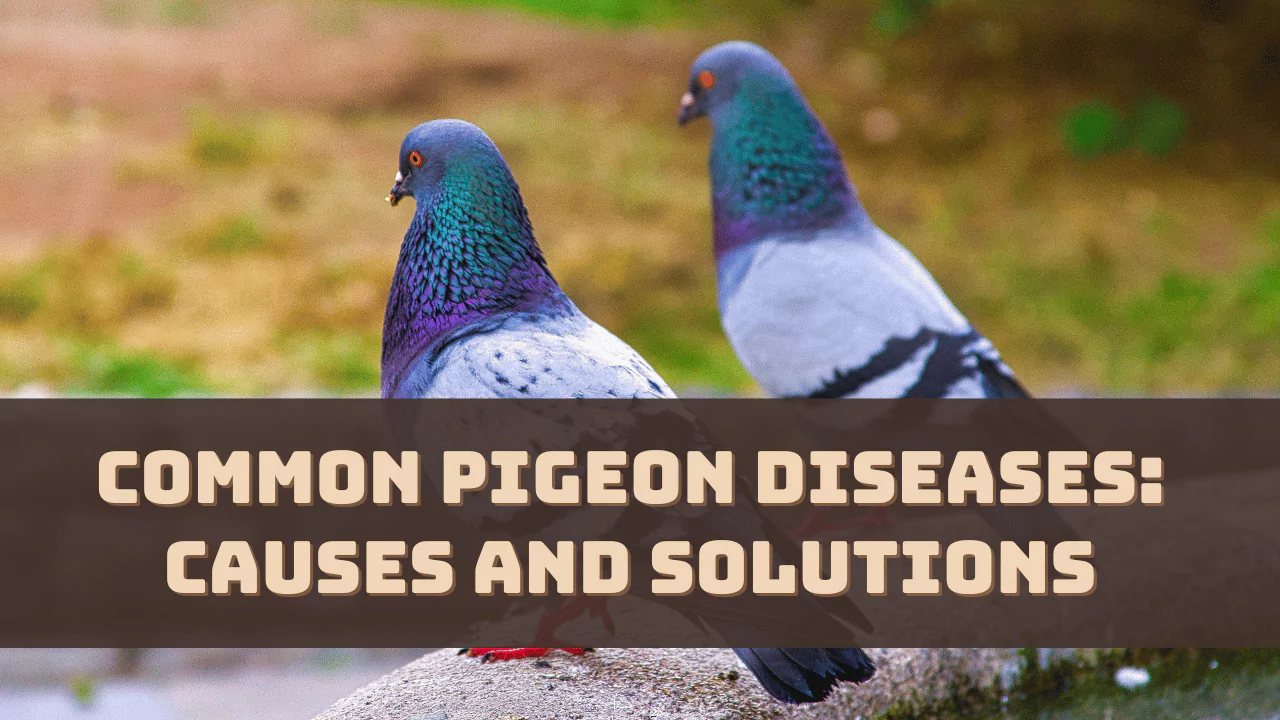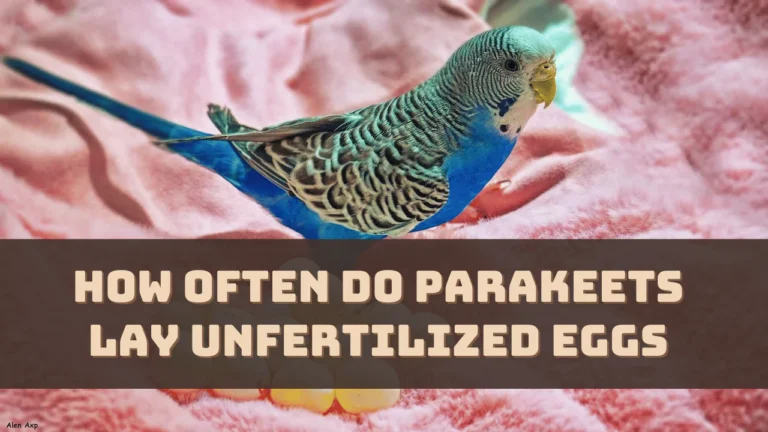Pigeons are prone to various diseases and thus it is essential to look out for the signs and different symptoms so that you can take preventive measures, prevent the disease from spreading among the other flock members, and provide appropriate treatment to the pigeon to help them recover.
So, here are the top 14 diseases you need to be careful about.
What are the Characteristics of a Healthy Pigeon?
The healthy pigeon can be recognized from their behavior, they are active, alert, and lively. They have common pastures, a well-maintained body weight, and a standard breathing rate.
14 Common Diseases Affected the Pigeon
Pigeons have been classified into 5 groups and originated in Europe, and since then they have been domesticated in various parts of the world. They are friendly and can be kept as pets, but you need to be cautious about the common problems that can lead to loss of life.
Coccidiosis
Coccidiosis is a kind of parasitic disease and it has been proven to be fatal among pigeons. It affects the digestive system of the pigeon and the bird starts to eat less. Also, if they are forced to eat, the food doesn’t get digested and thus there is a lack of nutrients in the body.
The main reason for the occurrence of Coccidiosis is food poisoning. Thus, you have to ensure that you provide them with healthy and nutritious food. The infection usually spreads through contact or when the bird ingests any infected feces or tissues. You also have to keep the infected pigeon under quarantine.
You can understand whether the bird is suffering from Coccidiosis by looking at the visible symptoms, which is diarrhea and it can extend to bloody diarrhea in most cases. To cure the bird, you have to feed them medication that protects against a large spectrum of diseases.
Herpesvirus infection
Herpesvirus infection is also known as Smadel’s disease and this is quite common among pigeons. Adult birds develop chronic liver diseases, respiratory problems, and brain infections.
However, there is no effective treatment available, so you need to maintain precautions. You can also try Acyclovir, which is an anti-herpes virus drug and quite expensive. Also, you do not minutely monitor the process as you administer the medication.
Trichomoniasis
Trichomoniasis is also called the canker disease and it is a parasitic disease, caused by Trichomonas Gallinae. These parasites infect the digestive system of the hosts and as soon as they leave the body of the host they die.
The birds get infected with the disease by drinking infected water or if an infected parent feeds the youngling. You can identify the disease through signs such as not eating, weight loss, and a ruffled look, but if ignored for a long time, it can also lead to the sudden death of the bird.
You can treat the disease Trichomoniasis, by offering antibiotics, and it also provides additional supplements, such as vitamins and minerals.
Worms
Worms are quite common in birds and pigeons most get infected by roundworms, tapeworms, and gapeworms. If the worm is unable to leave the body of the pigeon, then it starts affecting the biological functions leading to diarrhea, which makes the pigeon vulnerable to other diseases, as well.
The main cause of worms infecting a bird is through coming in contact with infected droppings or by eating insects. The common sign is diarrhoea which contains worms, weight loss, a weak look, and a decrease in performance. The disease can be cured through worm tablets which can help to battle most of the dangerous worms infecting the bird.
Ornithosis
Ornithosis is also called parrot fever and this can also get instamitted to humans. It is caused by Chlamydia and there are no such symptoms as the disease remains latent or hidden for years. However, it weakens the immune system which makes space for other latent infections. It also infects the respiratory tract of the bird, making it difficult for them to breathe. It also reduces the endurance and strength of the bird. Thus, the disease needs to be treated at the right time.
Ornithosis spreads through air, urine, or feces and also if the bird comes in contact with another infected bird. It can also spread through break-to-break contact, so it is advised to keep the bird in quarantine. The common signs are inflammation, diarrhea, fever, nasal droppings, low appetite, ruffled looks, shedding, and making weird breathing sounds.
The most well-designed medicine to cure this problem is a broad-spectrum antibiotic and it has a synergistic effect. Along with curing the disease, it also strengthens the pigeon’s body and adds minerals and vitamins.
Mycoplasmosis
Mycoplasmosis is an infection that affects the bronchi and it is of several types. The most dangerous aspect of the disease is that it is a combination of bacteria and viruses which makes it more fatal. The primary cause behind this problem is drinking, eating infected food or water, or coming in contact with infected feces.
The symptoms to recognize Mycoplasmosis are nasal discharge, being unwilling to fly, a decrease in performance, unusual movement, wheezing sound, and throat inflammation. It can be cured through antibiotics and it also helps the bird to regain the lost immunity, protecting it from other additional diseases. It also protects the pigeon against necrotic enteritis, colibacillosis, and salmonellosis.
Salmonellosis
Salmonellosis is also known as paratyphus and it is quite a bad bacterial infection as it is also contagious for humans. This pathogen attacks the intestine of the bird which can lead to serious damage. It reduces the immune system of the pigeons and there is also a decrease in appetite and performance. This disease is also called total pigeon as it can infect different parts of the body. Thus, it became necessary to keep the pigeon quarantined.
The most common way of spreading the disease is through infected food, water, and feces. The major symptoms are unusual flying movements, limping, decrease in appetite, weight loss, and diarrhea.
E coli
E coli is regarded as a nightmare for the pigeon species. It affects the birds at a fatal level and mostly the youngsters are vulnerable to it. This is thought to be the worst pigeon disease, being a bacterial infection.
This disease is known to reduce the capability of the immune system, thus the bird becomes more susceptible to bacteria and viruses. There are two types – Type 1 and Type II, and day by day it is getting difficult to treat due to its resistance to several antibiotics, but it is curable.
The main reason behind its occurrence is feeding on infected water and food. If the pigeon is under stress, then the disease can spread at a faster rate. If you suddenly change the diet of the pigeon, or the bird is going through intense training, then the bird can become susceptible to E coli due to a reduced immune system. The most prominent sign of this disease is that the pigeon is falling ill at a faster rate.
Hexamitiasis
Hexamitiasis is a type of parasitic disease and it is also known to be spironucleus and generally affects the younger pigeons. If Hexamitiasis is ignored, it can lead to the death of the bird. The most common way this disease spreads among birds is through infected water, food, and feces. The most common symptoms are yellowish or watery diarrhea, weight loss, unwillingness to fly, and dry feathers.
Necrotic Enteritis
Necrotic Enteritis is primarily caused due to Clostridium perfringens and it can be found everywhere, thus prevention becomes quite difficult. mostly the pigeons who are kept in the poultry are affected by this problem.
The primary causes of this disease are dust, soil-infected food, water, and feces. The common symptoms are diarrhea, an increase in mortality rate, depression, and a ruffled look. However, the disease is easy to cure only if the right medicine is given.
Colibacillosis
Colibacillosis is a secondary infection that affects the immune system of the bird. The most dangerous aspect is that there are many preventive medications, but to what extent they would prevent Colibacillosis is quite doubtful.
Colibacillosis occurs when the infected air is inhaled or eating and drinking infected feed and water. The most general symptom is reduction in the immune system and it also increases the fluid content in body cavities.
Encephalitis
Encephalitis is a type of viral infection that affects the brain of the pigeon and it leads to lethargy and seizures. The most common symptoms are head bobbing, twitching, and impaired coordination, and slowly the bird loses its balance to stand.
However, the worst part of this is not a cure for the disease at present, so prevention is the only cure. You have to keep the affected bird quarantined and all the other birds should be properly vaccinated.
Paramyxovirus
Paramyxovirus is also called the PMV or pigeon paramyxo and it is generated due to an airborne pathogen. The common symptoms are depression, weight loss, and labored breathing. However, it is always advised to keep the birds away from contact with other healthy birds.
Thus, a proper isolation plan is required before you add new birds to the flock. The possible treatments are providing supportive care, such as vitamins, and fluids, and providing oxygen therapy.
Frounce
Frounce is a fungal infection that affects the pigeon and it infects the respiratory system. The common symptoms are coughing and labored breathing. To prevent it you have to provide the bird with a clean and fungi-free environment. To treat the disease, you have to provide ant-fungal medications along with supportive care, such as vitamins and fluids.
How to Protect the Birds from Diseases?
If you want to prevent the pigeon from falling sick, then you have to ensure that you take proper preventative measures, such as providing clean living conditions, nutritious food, and going for regular veterinary checkups. You also have to vaccinate the bird against all the common diseases. You must also inspect the bird to check the regular signs of diseases or parasites and take immediate action.
Why Does Nutrient Deficiency Affect the Pigeon?
Due to nutritional deficiency, the pigeon is unable to get its daily share of vitamins and minerals, leading to weakening of bones, stunted growth, and a decrease in egg production. Thus, to prevent such problems, you have to provide them with a balanced diet with appropriate nutrient content, and it should have proteins, carbohydrates, minerals, fats, and vitamins. You must also provide the bird with clean drinking water and look out for signs of disease and parasites. You need to ensure proactive management so that the feathered pet can stay healthy and maintain its well-being.


![Can Ducks Have Celery? [Explained] 7 Can Ducks Have Celery](https://masterbirds.com/wp-content/uploads/2024/02/can-ducks-have-celery-768x432.webp)

